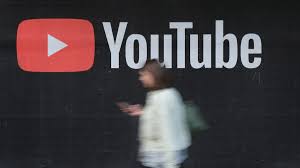In recent news, Google has made significant updates to its Search Console, specifically targeting video indexing. These updates aim to provide webmasters with more specific feedback on why their videos may not appear prominently in search results. By offering clearer insights, Google hopes to assist website owners in optimizing their video content for better visibility and increased website traffic.
The Importance of Video Indexing
Video content has become increasingly crucial in search engine results pages (SERPs), with video carousels and video-rich snippets playing a significant role. Therefore, it is essential to ensure that Google correctly indexes your videos to maximize their potential visibility.
Previous Limitations in the Video Indexing Report
Before the recent updates, Search Console’s video indexing report provided a general error message stating, “Google could not determine the prominent video on the page.” Unfortunately, this message did not offer specific guidance on how to address the issue, leaving webmasters unsure about the necessary steps to improve video visibility.
Google’s Enhanced Video Indexing Report
To overcome the limitations of the previous video indexing report, Google has now introduced three specific reasons why a video may not be prominently indexed:
- Video outside the viewport: This error suggests that the video is positioned outside the visible area of the page. To rectify this, webmasters should reposition the video within the renderable area to ensure its visibility upon page load.
- Video too small: If a video is deemed too small, it may not meet Google’s specific criteria for indexing. Adjusting the video’s size to align with Google’s recommendations can resolve this issue.
- Video too tall: Similarly, if a video is considered too tall, it may hinder indexing. Webmasters should review and modify the video’s dimensions accordingly.
These specific reasons offer actionable advice, enabling webmasters to make the necessary changes to improve video indexing and, ultimately, enhance their videos’ visibility on Google Search.
Potential Impact of the Changes
Implementing the recommended changes based on the enhanced video indexing report can have a significant impact on websites that receive traffic to pages with video content. By optimizing video visibility, webmasters may experience increased website traffic and improved user engagement.
Best Practices for Video Indexing
While the updated video indexing report provides more specific feedback, it is essential to follow best practices to ensure optimal video indexing and visibility. Here are some key recommendations:
- Position videos within the viewport: Ensure that the video is placed within the visible area of the page to maximize its visibility upon page load.
- Optimize video size: Adjust the video’s dimensions to meet Google’s specific criteria for indexing. This may involve resizing or reformatting the video file.
- Utilize video sitemaps and structured data: Implementing video sitemaps and structured data can provide additional information to search engines, improving the indexing process.
- Make video content accessible to Googlebot: Ensure that the video content and associated metadata are accessible to Google’s crawlers, allowing for accurate indexing.
- Provide clear and accurate metadata: Include relevant and descriptive metadata, such as titles, descriptions, and tags, to help search engines understand the video’s content and context.
- Prioritize video quality and user engagement: High-quality videos that engage users are more likely to be indexed prominently. Focus on producing valuable and engaging video content to increase the chances of visibility.
By following these best practices, webmasters can optimize their videos for improved indexing and visibility on Google Search.
Gradual Implementation of Changes
Webmasters should note that the updated video indexing report may not be immediately visible in Search Console. Historical data may take up to three months to update fully, displaying the new error reasons. However, this delay does not affect the impact of the recommended changes on video indexing.
Conclusion
Google’s enhancements to the video indexing report in Search Console provide webmasters with more specific guidance on improving video visibility in search results. By addressing issues such as videos positioned outside the viewport or videos that are too small or tall, webmasters can take actionable steps to optimize video indexing. Following best practices and implementing the recommended changes can result in increased website traffic and improved user engagement. Stay ahead of the curve by leveraging Google’s latest updates to enhance your video content’s visibility and achieve optimal results in search rankings.
Remember, continuous monitoring and adjustment are essential to keep up with Google’s evolving algorithms and ensure ongoing visibility for your video content.
Additional Information:
Primary Keyword: Video Indexing Secondary Keywords: Search Console, Google, visibility, website traffic, indexing issues, best practices, video content, user engagement, video-rich snippets, video carousels, SERPs, metadata, structured data, Googlebot, optimization, search rankings


No comments! Be the first commenter?